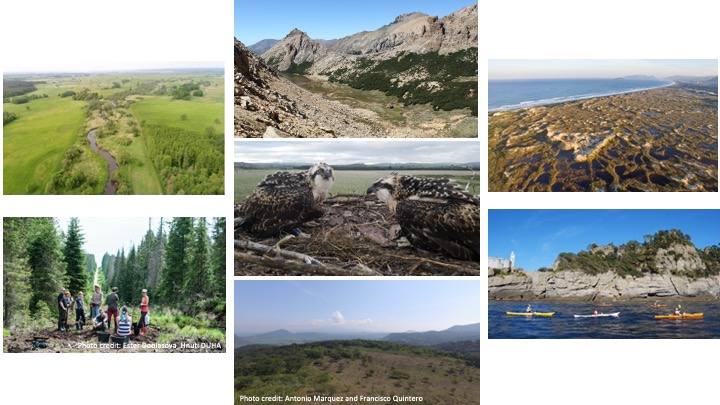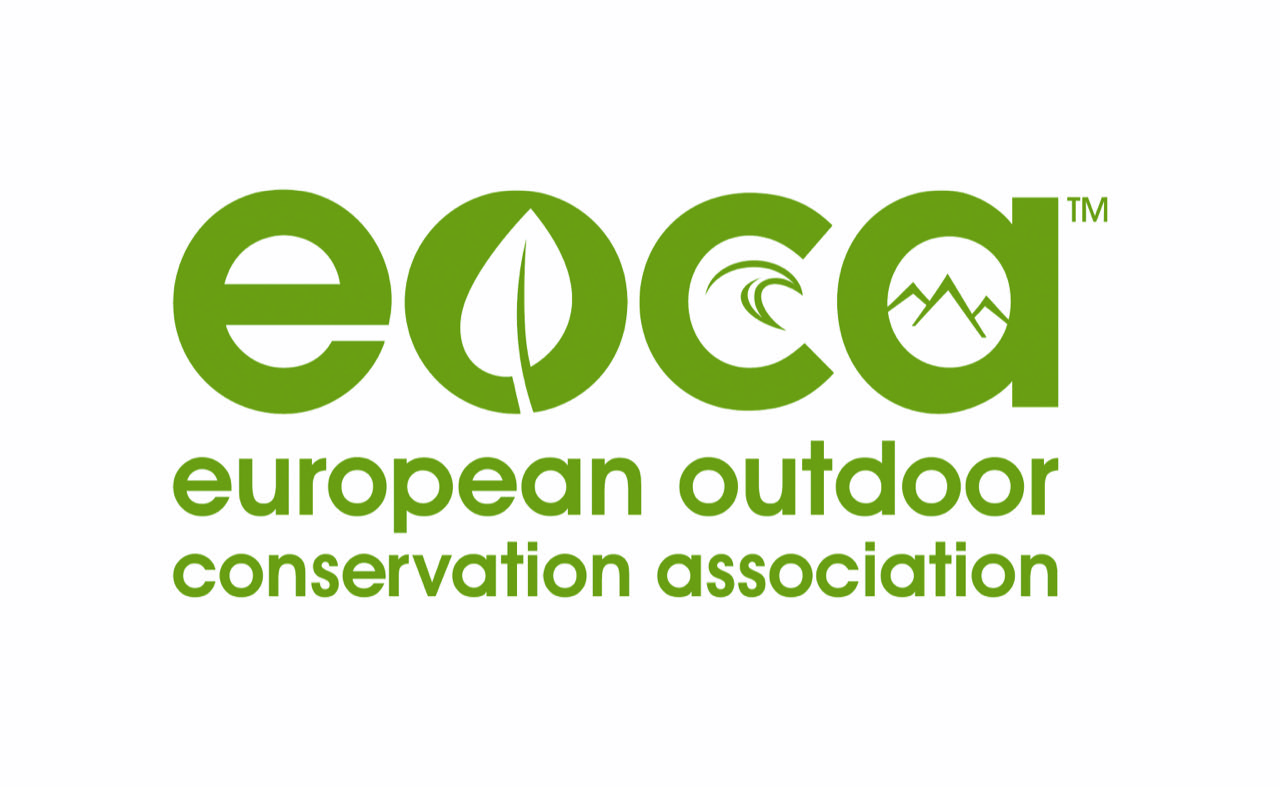Following the receipt of over 250 funding applications in November 2020, a comprehensive assessment process, a two week public vote and a members-only vote, the European Outdoor Conservation Association (EOCA) has now committed over €185,000 to seven new conservation projects, thanks to the continued generous support of its members.
This spring funding round is the first of four over 2 years which will fund projects in line with the ‘Wild for Nature: EOCA’s Landscape Legacy Project’ focus. All projects funded will address the double threats of biodiversity loss and the climate emergency, in various wild landscapes around the world. By being wildly enthusiastic about nature, the outdoor industry can protect wild habitats for nature.
The projects selected for funding by the general public, outdoor enthusiasts, and members of EOCA are:
- Bogs: the Best Weapons Against Climate Change, UK
- Removing Biological invasions in Coastal Ecosystems, Brazil
- Promoting Wildlife Comeback in Ina River, Poland
- Portofino Seaweed Garden, Italy
- Walk the Trail, Argentina
- Saving La Primavera’s last wildlife corridor for pumas, Mexico.
In addition, EOCA has launched a Fundraiser Project, which the general public and members are invited to donate to. This project will host volunteer weeks, designed to restore and conserve various habitats in the Czech Republic:
Volunteering for Healthy Landscapes, Czech Republic
You can find more information on all of these projects below, and on the EOCA website at this link.
Catherine Savidge, General Manager of EOCA said “Despite the difficulties of the last 18 months, EOCA members from the European outdoor industry have continued to step up and support vital conservation projects around the world. The projects selected are highly important, not just for the biodiversity they support in their landscape, but also for the contribution they will make in tackling climate change, through enabling healthy habitats draw down and store carbon. We look forward to working closely with these project partners in the coming months as the projects are implemented.”
Details of Projects Selected for EOCA Spring 2021 Funding Through The Public Vote, Members Vote, and for the Public Fundraiser:
1. Bogs: the Best Weapon against Climate Change, UK
Project Objectives: Peatlands are unique habitats, more commonly known as ‘bogs’. Bogs are the best weapon we have against climate change, locking away carbon for the health of our planet, helping to prevent flooding, and supporting a host of plant and animal species. Foulshaw is a summer home to rare breeding ospreys – until recently extinct in England. It is also an important habitat for red deer, rare dragonflies, and many birds. 350 hectares in size, Foulshaw provides vital links to neighbouring and nearby peatlands, allowing species movement. Cumbria Wildlife Trust will maintain the health of this habitat by removing invasive species over 75ha of the reserve, creating new habitat, maintaining bunds so that the peat holds its water content, thereby protecting existing habitat. The project will also share the importance of this habitat with 15,000 visitors to the site, and 300 school children.
2. Removing Biological invasions in Coastal Ecosystems, Brazil
Project Objectives: Restinga (coastal scrub) ecosystem is a vegetation type that develops on sandy soils and sand dunes and acts as a barrier between the ocean and inhabited areas on the island of Santa Catarina, southern Brazil. Small fishing villages and residential areas have been increasingly damaged by extreme weather events as a result of the degradation of restingas by invasive plants. The overall goal of The Horus Institute project is to increase the resilience of coastal areas by controlling invasive alien species, thereby restoring natural areas. At the same time, it will raise awareness on climate change and adaptation measures amongst local communities. EOCA funds will help remove invasive pine in 165 hectares of important sand dunes, working with volunteers in Serra do Tabuleiro State Park. Data and images from these efforts will be used to raise awareness and educate local communities to help protect fragile areas.
3. Promoting Wildlife Comeback in Ina river, Poland
Project Objectives: The 129km River Ina empties into the Odra Lagoon and the Baltic Sea. It was modified for shipping in the 15th Century. After WW2, commercial use ended and wildlife returned to the river, which is now important for salmon, kingfisher, beaver, crane and sea eagle. However, channelisation has left an artificial riverbed morphology. As climate change intensifies, the impacts of this become more obvious, with drought and flood increasingly impacting disconnected floodplain habitats. The project will engage local volunteers using low-tech approaches to raise the bed level of the whole river, reconnecting the river to the floodplain and recreate migratory fish spawning grounds. 1km of river morphology will be restored, rewetting a 50ha floodplain, trees will be planted along 17km of river, cleanups will be undertaken and kayakers and anglers involved on issues of protection for the river.
4. Portofino Seaweed Forest, Italy
Project Objectives: Cystoseira forests are among the most important foundation species in the Mediterranean Sea. These complex habitats are essential for biodiversity, supporting food webs, sequestering large amounts of CO2, and being used as indicators of ecological quality. However, Mediterranean Cystoseira populations have been declining due to habitat destruction, human trampling and chemical pollution, which will likely intensify under climatic change. This project will involve marine outdoor enthusiasts in protecting, monitoring and restoring Cystoseira seaweed forests and their supporting habitat in Portofino Marine Protected Area. Using kayaks, StandUp Paddleboards and via snorkelling /coasteering, volunteers will help Outdoor Portifino transplant juvenile plants into an 89 hectare study site. Once restored, Cystoseira immediately takes back its role as ecosystem engineer, creating a 3D forest-like environment in which biodiversity can thrive. Training will be given on the importance of the ecosystems, and transplanting and monitoring techniques, enhancing ocean literacy in the area.
5. Walk the Trail, Argentina
Project Objectives: Refugio Frey (Frey mountain hut), is an iconic spot for trekking and climbing. It is the most visited mountain hut in the Nahuel Huapi National Park, in Argentinean Patagonia, receiving up to 700 visitors per day. The number of visitors is however impacting on the local habitats. The current trail travels through a high mountain Andean bog plant community, and to the shores of Toncek and Schmoll Lakes. These habitats are important for carbon storage and have high conservation value, being home to species which are endangered and only found here. Through this project, Banque de Boscos Foundation will work with environmental enthusiasts, refugio staff, ecologists and national park employees to reduce the impact on 8.5 ha of the valuable habitats, by designing a new layout of sections of the trail that will be further away from the bog and include designated access points to the Toncek shore avoiding trampling of sensitive riparian plant communities. Local materials will be used, erosion and water drainage into Toncek Lake with be reduced and habitat will be restored in the site of the old trail.
6. Saving La Primavera’s last wildlife corridor for pumas, Mexico
Project Objectives: This project will conserve the last wildlife corridor for larger mammals around the Biosphere Reserve “Bosque La Primavera” (BLP) in Jalisco, Mexico, which covers 30,500 ha of oak-pine and tropical deciduous forest. The area hosts many species, including pumas, however, it cannot provide a viable habitat area for them if connections to other forests are not conserved. Moreover, nearby Guadalajara means forest fires and land-use change drive biodiversity loss. The Centre for Research and Projects in Environment and Development (CIPAD) has partnered with local organisations and communities to conserve the last active wildlife corridor towards the Ahuisculco mountains since 2010, and now needs to restore 10 ha of critical habitat using 10,000 native tree species. This will link the mountains to the reserve, enabling wildlife to travel between both. The project will monitor biodiversity in the area with camera traps, and run a communication and awareness campaign.
7. FINALLY, EOCA’s PUBLIC FUNDRAISER PROJECT:
Volunteering for Healthy Landscapes, Czech Republic
Project Objectives: Species decline in the Czech Republic is due to expansion of the cultural landscape, spreading of invasive species and unsustainable agriculture and forestry. Through this project, Hnuti DUHA addresses the three latter by engaging nature enthusiasts in direct hands-on conservation while boosting their knowledge and therefore care of nature and biodiversity. 14 week-long events will be organised for 160 participants, each consisting of 6 days in nature. On 5 days, participants will be involved in planting trees, protecting seedlings, removing invasive plants, and renewal of peatlands and wetlands. The 6th day will be a guided excursion. An evening programme of educational activities such as lectures and debates will be provided. Each event will take place in a selected location facing a specific threat such as a forest dealing with bark beetle, protected areas where wilderness is endangered or agricultural landscapes facing loss of biodiversity.
INFO: EOCA



